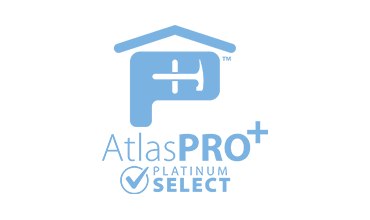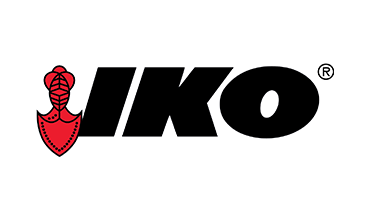Roofs are like shields for our homes, keeping us safe and dry. But over time, they can run into problems like leaks, missing shingles, and damaged flashing. These issues might seem small at first but can lead to bigger problems if not taken care of quickly. Water damage can seep into your home, causing not just structural problems but also mold and other issues.
Identifying Common Roof Issues
Roofs face various challenges over time. Among the most common problems are leaks, missing shingles, and damaged flashing. Leaks often occur when water finds a way through the roof’s surface, which can happen due to cracked shingles or poor construction. Missing shingles leave gaps that expose your roof to the elements, and damaged flashing, which seals areas around vents and chimneys, can allow water to seep in.
If these problems are not addressed quickly, they can become major headaches. A small leak can turn into extensive water damage inside the home, leading to structural issues and mold growth. Missing shingles expose the roof to further damage, as wind and rain make their way into the unprotected areas. Damaged flashing can worsen over time, allowing more significant leaks to develop around vulnerable points of the roof.
Homeowners can prevent these issues by being vigilant about maintenance and inspections. Watch for water stains on ceilings or walls, check for missing shingles from the ground, and inspect the attic for any signs of water intrusion. Additionally, during heavy rainfall or storms, pay attention to strange noises that may indicate loose parts of the roof.
Routine checks, especially after severe weather, can help spot problems early, allowing for prompt repairs before substantial damage occurs.
Exploring Repair Techniques
When faced with roof issues, it’s important to know your repair options. Various techniques can address different problems, ensuring your roof’s integrity is restored.
1. Shingle Replacement
- Used for repairing or replacing missing or damaged shingles.
- Offers a long-term fix if shingles match the existing roof material.
2. Flashing Repair
- Necessary when materials around roof edges, vents, or chimneys are compromised.
- Involves resealing or replacing the flashing to keep water out.
3. Patching
- Suitable for small leaks or cracks.
- Provides a temporary fix until a more permanent solution is applied.
When considering repair techniques, it’s vital to understand the difference between temporary fixes and permanent solutions. Temporary fixes, like patching, can quickly solve a problem but may require regular attention. Long-term options like replacing shingles or flashing ensure the issue won’t easily reappear, offering peace of mind for homeowners.
Choosing the correct method depends on the damage’s severity and your roof’s overall condition. Small issues may only need minor repairs, but widespread damage might require more comprehensive intervention. Always assess the extent of the damage and consider consulting an expert to advise on the best course of action, ensuring that your roof lasts for many more years.
DIY vs. Professional Repairs
Deciding between do-it-yourself repairs and hiring a professional can be tricky. Each option has its own set of advantages and disadvantages, depending mainly on the task at hand.
DIY repairs can save money upfront and offer a sense of accomplishment. Replacing a few shingles or sealing small leaks may be manageable tasks for a handy homeowner. However, they require basic roofing knowledge and the right tools, such as a good ladder, safety harness, and repair kits.
Advantages of DIY Repairs:
- Cost savings on labor
- Immediate attention to minor issues
- Hands-on involvement in home maintenance
Disadvantages of DIY Repairs:
- Potential safety risks
- Possible lack of professional finish
- Increased likelihood of incorrect installation
Professional repairs, on the other hand, bring experience and expertise, ensuring the job gets done correctly. While they may cost more than DIY fixes, professional roofers ensure safety and effectiveness, particularly for more complex issues.
Advantages of Professional Repairs:
- Skilled craftsmanship
- Access to high-quality materials and tools
- Assurance of warranty and accountability
Disadvantages of Professional Repairs:
- Higher initial cost
- Scheduling and availability delays
Safety is a major concern in both scenarios. Roof work involves heights and potentially hazardous tools. Professionals are trained to handle these safely, reducing the risk of accidents. If you’re uncertain about your ability to tackle a specific project, it’s wise to consult with roofing experts.
Evaluating Repair Costs and Benefits
Various factors influence the cost of roof repair. Understanding these can help you manage budgets and set realistic expectations on expenses. Material type plays a significant role in repair costs. Asphalt shingles are generally less costly than metal or tile options, affecting both material and labor expenses. The extent of damage is another crucial factor—a simple shingle replacement often costs less than widespread water damage repair.
To assess cost-effectiveness, weigh the repair costs against the potential benefits. Small repairs might be more economical, ensuring your roof remains functional without significant investment. However, if repairs are frequent or extensive, roof replacement could offer better long-term value. Replacements often provide improved energy efficiency and reduced maintenance, saving money over time.
Here’s how to balance short-term and long-term considerations:
1. Calculate Immediate Repair Costs: Consider material expenses, professional fees, and any additional equipment needed.
2. Weigh Against Potential Savings: Estimate savings from reduced energy bills, improved home insulation, and decreased maintenance needs.
3. Evaluate Longevity and Benefits: Assess whether a full roof replacement might better suit a long-term strategy, particularly if your roof is aging or frequently problematic.
When determining the best course of action, consider both your financial situation and your home’s specific needs to ensure that your investment protects your home for years to come.
Conclusion
Understanding your roof repair options can significantly impact your home’s safety and value. Whether handling simple DIY repairs or hiring professionals for complex issues, being informed helps you make smart decisions. Regular maintenance and prompt attention to small problems can save money and prevent severe damage. Balancing costs with benefits ensures that your roof remains a strong shield for your home.
Looking to keep your roof in top shape? Over the Top Roofing & Restoration offers roof repair in Springfield, MO, to tackle any roofing challenge. With our skilled professionals, you’ll have peace of mind knowing your roof is well cared for. Contact us today to explore how we can help protect and enhance your home!




